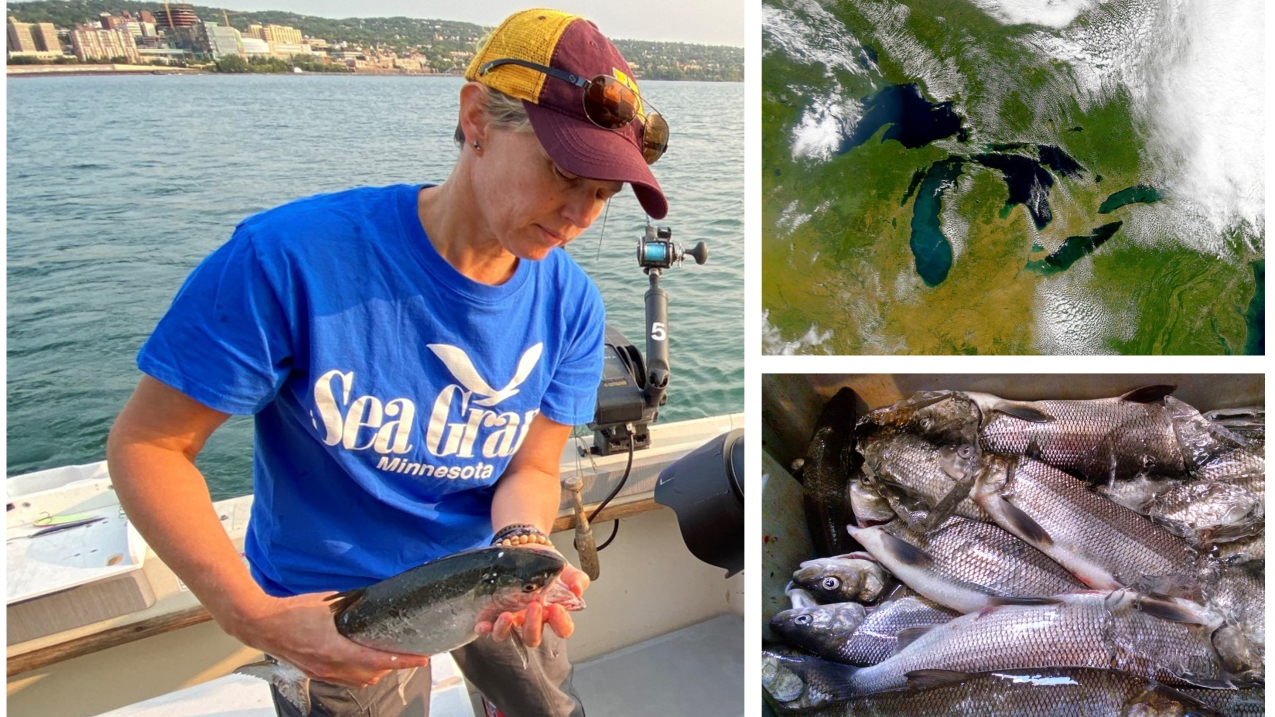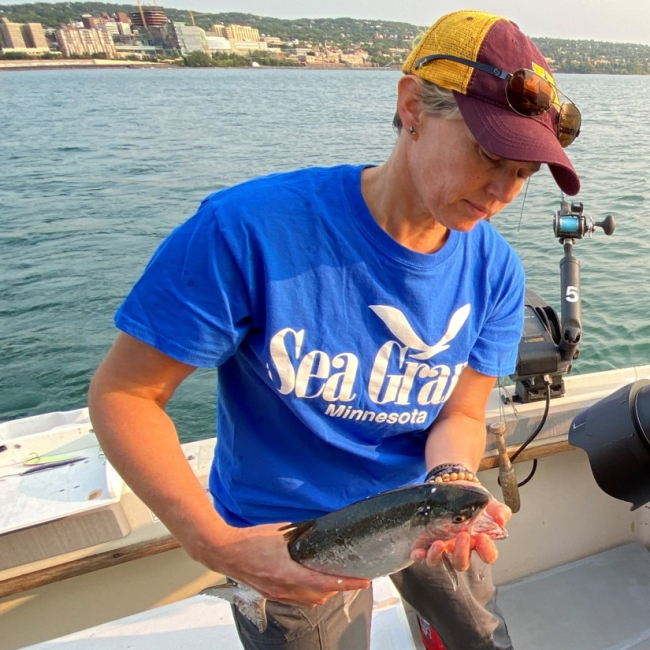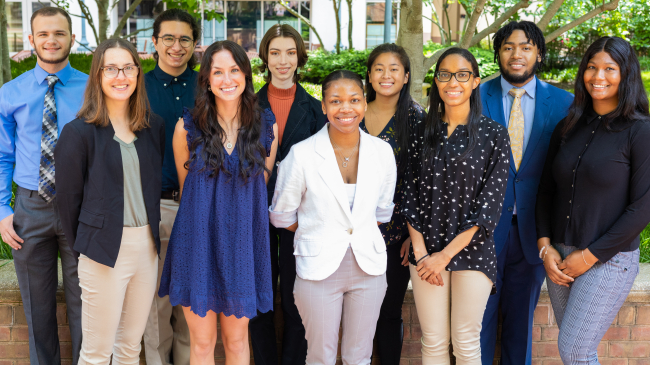October is National Seafood Month! Sustainable seafood plays an essential role in feeding the world's growing population.

Seafood experts in the Great Lakes participate in everything from seafood education and outreach activities, to restocking and restoration efforts. (Image credit: Photos courtesy of Seafood Month participants)
Lake Superior, Lake Huron, Lake Michigan, Lake Erie, and Lake Ontario, along with their connecting channels, make up North America’s Great Lakes system (also known as the Laurentian Great Lakes). The world’s largest freshwater system, the Great Lakes are a tremendous resource shared among eight U.S. states and two Canadian provinces.
The Great Lakes Aquaculture Collaborative (GLAC) offsite link group is composed of Sea Grant extension educators, science communicators, fisheries biologists, economists, and aquaculture specialists from Minnesota, Michigan, Wisconsin, Illinois, Indiana, Ohio, Pennsylvania, and New York. GLAC's goal is to work together to support an environmentally responsible, science-based, competitive, and sustainable aquaculture industry in the Great Lakes region.
Learn from experts in the Great Lakes region about what they're "cooking up" in the field, and in their own kitchens!
For as long as people have lived near the Great Lakes, they have been an important source of local and fresh fish!
Learn more about Titus
In what ways are you connected to seafood? Is there a specific passion that drove you to do the work that you do today?
My background is as an aquatic ecologist who studies fish habitat. I have connected with Great Lakes fisheries through my work and have been able to work closely on research with the industry to study catch and bycatch.
What's something unique about seafood in your region that makes it a fun sector to work or teach in?
People connect with fish and are often surprised to learn that Wisconsin (and the Great Lakes) have commercial fisheries. They have seen shows on TV from the ocean fisheries, but there are fish being caught daily in our coastal communities.
What's something you wish everyone knew about your work or your region?
For as long as people have lived near the Great Lakes, they have been an important source of local and fresh fish!

Amy Schrank
Fisheries and Aquaculture Extension Educator
University of Minnesota Sea Grant offsite link
Duluth, Minnesota
Looking back, I realize the larger purpose for these excursions was a connection to family and water that has been with me my whole life.
Learn more about Amy
In what ways are you connected to seafood? Is there a specific passion that drove you to do the work that you do today?
My connection to Great Lakes seafood started when I was a small child fishing with my grandmother and mother in lakes in Michigan and in the St. Marys River in Ontario. The purpose of our fishing was always to catch breakfast. My sister and I would watch and “help” my Grandmother clean the fish we caught, usually yellow perch, bluegill, or the occasional smallmouth bass. We always closely examined the stomach contents first, expressing amazement when we found a minnow or worm there, and left the innards for the birds out on the rocks.
Looking back, I realize the larger purpose for these excursions was a connection to family and water that has been with me my whole life. These early experiences fishing with our cane poles, catching bait minnows with lift nets off the dock, and enjoying the taste of a yellow perch that was swimming only a few hours before, set the stage for my career in fisheries and aquatic ecology and my love for water.
What's something unique about seafood in your region that makes it a fun sector to work or teach in?
The connections created by sharing seafood in the Great Lakes are something I truly value. Opening a newspaper-wrapped, smoked whitefish on a picnic table to share with friends on a Friday evening is pure enjoyment. Recreating these experiences with students and the public strengthens community connections.
In the Great Lakes, we all have stories about our relationships to water and the food it provides — whether that is wild rice, fish, roe, crayfish or cattail. Sharing food and stories brings these relationships to life and reminds us of our responsibility to protect and restore these aquatic systems that sustain us.
What's something you wish everyone knew about your work or your region?
The Great Lakes holds over 20% of the world’s surface freshwater, and has the most miles of contiguous coastline in the United States — with the exception of Alaska. Of the 34 National Sea Grant college programs, 24% of them are in the Great lakes region.
Fresh lake whitefish, courtesy of Titus Seilheimer
I love simple recipes, so I suggest a fresh lake whitefish filet on top of onions in a foil boat. Add your favorite seasonings and a couple pats of butter or extra virgin olive oil. Put everything on the grill and cook until the fish is flaking and opaque. Easy in the oven, the grill, or a campfire!
Fish to Fork cooking videos, courtesy of the Great Lakes Aquaculture Collaborative
The Great Lakes Aquaculture Collaborative offsite link produces a series of cooking videos called Fish to Fork. The first episode features Rushing Waters Fisheries’ Peter Fritsch preparing and frying a whole rainbow trout. The second episode features staff from Wisconsin and Michigan Sea Grant cleaning whole fish, fileting fish, cleaning whole fresh shrimp and then grilling them.





